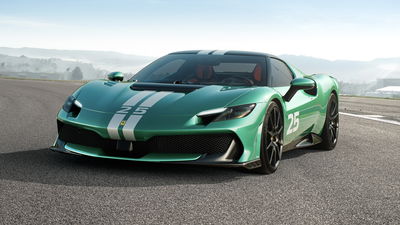The Production Czinger 21C Will Do 281mph

About 15 months ago, we were discussing the long-term viability of Californian start-up Czinger. Making a new supercar brand is a tricky endeavour, but fast forward to today, and Czinger has made it through a global pandemic and come out the other side with the production version of its first car. This seems like a good sign.
It’s still called the 21C, and the key details remain. We have the tandem seating position that allows the driver to sit centrally in the car with a (preferably short) passenger behind, a 2.88-litre flat-plane crank V8 providing 1233bhp, and supplementation from a pair of electric motors - one for each front wheel.

However, compare it to the old car, and you’ll see that much of the bodywork has been altered. The whole car is now a little wider at 2050mm, and yet, the dry weight is just 1240kg, giving the 21C the coveted but seldom-seen 1:1 power-to-weight ratio.
This makes the 21C spectacularly fast. Czinger has released a comprehensive list of performance stats for the car, including 0-62mph in 1.9 seconds, 0-186mph in 8.1, and 0-248mph in 21.3 seconds. Keep the throttle pinned for even longer in a 21C with the low-drag ‘vmax’ setup, and you’ll hit 281mph, up from the concept’s 268mph claimed top speed.

If you instead go for the high downforce configuration, that figure will drop quite a bit. Czinger hasn’t given a number for the production car, but for the concept, this was a still very impressive 236mph. In return for the lost speed, you’re getting an incredible amount of downforce - Czinger quotes 615kg at 100mph and an astonishing 2500kg at 200mph. That’s nearly as much as the Bugatti Bolide.
Getting you to the above figures is a twin-turbo V8 developed from the ground-up by Czinger. It redlines at 11,000rpm, and if you pay for a power upgrade, it’s good for 1332bhp. It drives the rear wheels via a seven-speed sequential gearbox and can be run on a variety of juices including e-fuels.

There’s no mention of price, but a figure of $1.7 million (£1.2 million) was touted when Czinger revealed the concept last year. The intention is still to build 80 of these things, with a lot of the components created via 3D printing.















Comments
Not really sure how long a 1350 hp 2.88L engine is going to last. But hey, it’s not like the people who buy these cars actually drive them.
It’ll last as long as the computer holding the render lasts as that’ll all it’ll ever be.
Sure it will…..in a simulation.